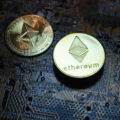Gold recycling is a lucrative industry that has been growing steadily over the years. However, it is an industry that is often overlooked and underappreciated. Many people are unaware of the hidden fortunes that can be made in this industry, and the significant impact it has on the environment. In this article, we will uncover the untold secrets of the gold recycling industry and explore the opportunities and challenges that it presents.
The Gold Recycling Industry
Gold recycling involves the collection, processing, and refining of gold from various sources, such as jewelry, coins, and other gold products. The industry has been growing rapidly in recent years, driven by increasing demand for gold, tightening environmental regulations, and advances in technology.
The gold recycling industry is a significant contributor to the global gold supply, with recycled gold accounting for around 30% of the total gold supply. The industry provides a sustainable and environmentally friendly alternative to gold mining, which can have significant environmental and social impacts. Gold recycling also helps to reduce waste and conserves natural resources, as it reuses gold that would otherwise be discarded.
Sources of Gold
Gold can be recovered from a variety of sources, including:
- Jewelry: Gold jewelry is one of the largest sources of gold for recycling. Gold jewelry can be broken, damaged, or simply unwanted, and can be recycled to recover the gold content.
- Coins: Gold coins, such as the American Gold Eagle and the South African Krugerrand, are also a significant source of gold for recycling. These coins are often collected and melted down to recover the gold content.
- Dental and Medical Scrap: Gold is often used in dental and medical applications, such as dental fillings and crowns. When these items are no longer needed, they can be recycled to recover the gold content.
- Electronics: Gold is used in electronics, such as smartphones, computers, and other electronic devices. When these devices are discarded, the gold can be recovered through recycling.
The Gold Recycling Process
The gold recycling process involves several steps, including:
- Collection: Gold is collected from various sources, such as jewelry, coins, dental and medical scrap, and electronics.
- Sorting: The collected gold is sorted based on its purity and form.
- Refining: The sorted gold is then refined to remove impurities and improve its purity.
- Melting: The refined gold is melted down to create a uniform gold bar or ingot.
- Assaying: The gold bar or ingot is then assayed to determine its purity and weight.
The Benefits of Gold Recycling
Gold recycling offers several benefits, including:
- Sustainability: Gold recycling is a sustainable and environmentally friendly alternative to gold mining. It reduces the need for new gold mining, which can have significant environmental and social impacts.
- Conservation of Natural Resources: Gold recycling helps to conserve natural resources, as it reuses gold that would otherwise be discarded.
- Reduced Waste: Gold recycling reduces waste by reusing gold that would otherwise be thrown away.
- Economic Benefits: Gold recycling provides economic benefits, as it creates jobs and generates revenue for the industry.
Challenges Faced by the Gold Recycling Industry
Despite the benefits of gold recycling, the industry faces several challenges, including:
- Competition from Gold Mining: Gold mining is a significant competitor to gold recycling, as it provides a cheaper source of gold.
- Fluctuating Gold Prices: The price of gold can fluctuate significantly, which can affect the profitability of gold recycling.
- Environmental and Health Concerns: Gold recycling can have environmental and health impacts, such as the release of toxic chemicals during the refining process.
As the world continues to grapple with the challenges of climate change, environmental degradation, and resource depletion, the importance of sustainable industries like gold recycling cannot be overstated. It is crucial that we adopt environmentally friendly practices and technologies that reduce waste and conserve natural resources. The gold recycling industry is a shining example of how we can achieve this goal while also promoting economic growth and sustainable development.
Investing in gold recycling is not only a smart business decision, but it is also a responsible and sustainable choice. As consumers become more environmentally conscious, the demand for sustainable products and practices will continue to grow. By investing in gold recycling, companies can reduce their environmental footprint, improve their brand reputation, and contribute to a more sustainable future.
Gold recycling is a hidden fortune that is waiting to be tapped. With the right investments, technologies, and regulations in place, the industry can continue to grow and thrive, providing a sustainable and environmentally friendly source of gold for generations to come. It is time for us to uncover this hidden fortune and embrace the sustainable future that it promises.
Author: Pooyan Ghamari, Swiss Economist & Visionary







